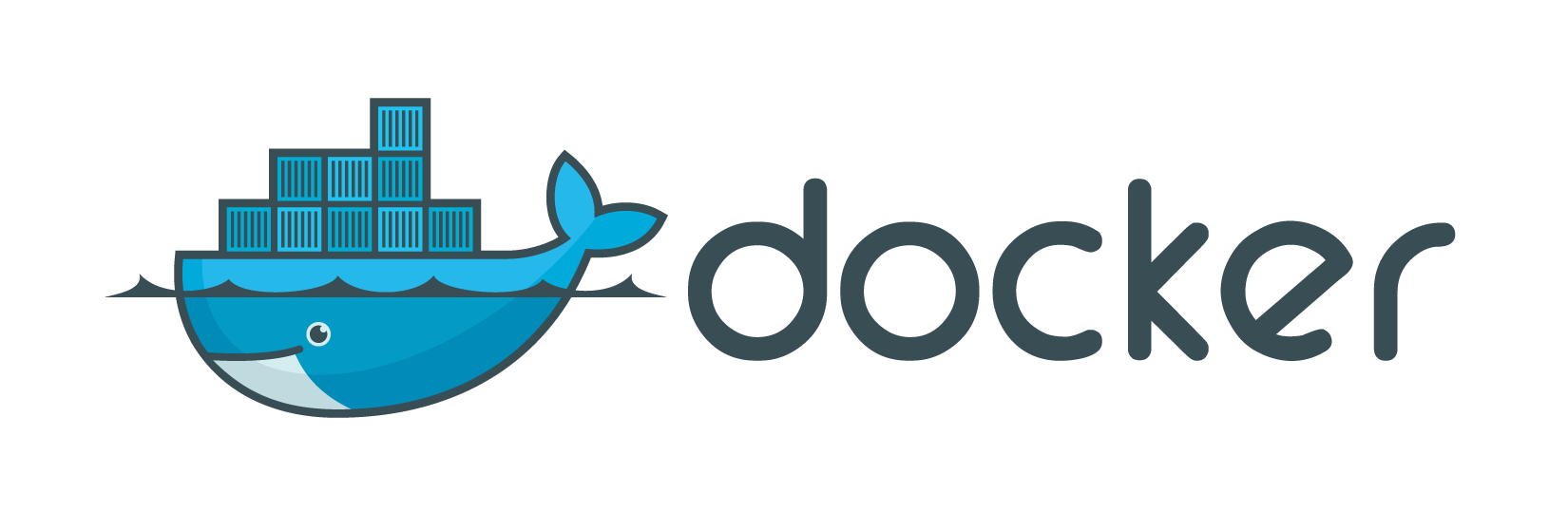This article is part of a series of three articles about Docker:
- Docker and permissions management
- Set up a reverse proxy with Nginx and Docker-gen (Bonus: Let's Encrypt)
- Tips and reminders for using Docker daily
For this last article about Docker, I wanted to share with you what makes my daily usage of Docker pleasant. Besides all of this, I feel it is interesting to provide some reminders on Docker usage.
Reminder #1: Exposing a port is not always necessary, and can even be a security hole
Getting back to our first Owncloud example where we’ve launched a Mysql and an Owncloud container:
version: "3"
services:
mysql:
image: mysql:8.0.3
hostname: mysql
ports:
- 3306:3306
environment:
MYSQL_ROOT_PASSWORD: root
MYSQL_DATABASE: owncloud
MYSQL_USER: ippon
MYSQL_PASSWORD: ippon
networks:
- ippon
owncloud:
image: owncloud:10.0.3
hostname: owncloud
ports:
- "8080:80"
networks:
- ippon
networks:
ippon:
This way, the database is accessible from the host as if it was installed on it.
But, do we really need that ?
Let’s remove port 3306 exposure, this way, with Mysql-client on host, you will not be able to connect to it through:
$ mysql -h 127.0.0.1 -u ippon -p
Enter password: ippon
But through:
$mysql -h [mysql-container-ip] -u ippon -p
Enter password: ippon
Being in the same network, Owncloud will continue to access the Mysql container’s ports (as did the link function) and so, will not have any problem connecting to it.
Now, let’s say Mysql-client is not installed on your host or your user is not allowed to use it. So, you will have limited the database access to containers on the same network ! Security improved !
Reminder #2: Docker DNS is not activated by default!
Yes, none of the active containers in the default bridge network (docker0) will be able to communicate through their hostnames. They will be able to communicate using their IP address, but in order to use their hostname (which you can set beforehand) you will need to create and use your own network. Even if containers cannot find each other using their hostname, hosts can.
Tip #1: Customize docker ps
This command is definitely one of the most used, so, why not customize it ?
Here is what the docker ps response looks like by default:
$docker ps
CONTAINER ID IMAGE COMMAND CREATED STATUS PORTS NAMES
9a039e8c80d1 mysql:8.0.3 "docker-entrypoint..." 18 seconds ago Up 15 seconds 3306/tcp reverseproxy_mysql_1
592d5cb33180 owncloud:10.0.3 "docker-entrypoint..." 18 seconds ago Up 16 seconds 0.0.0.0:8080->80/tcp reverseproxy_owncloud_1
3c9a4976da73 jrcs/letsencrypt-nginx-proxy-companion:v1.5 "/bin/bash /app/en..." 7 days ago Up 16 seconds reverseproxy_letsencrypt_1
1c2c18ca14b3 jwilder/nginx-proxy "/app/docker-entry..." 7 days ago Up 17 seconds 0.0.0.0:80->80/tcp, 0.0.0.0:443->443/tcp reverseproxy_nginx-proxy_1
185859d2f7c6 portainer/portainer "/portainer" 2 months ago Up 5 hours 0.0.0.0:9000->9000/tcp portainer
First of all, not all of the information is useful to me, and even worse, the column display should bring visibility but is totally broken due to so much information being displayed per line.
Personally, the useful information is: ID, Image, Status, Ports and Name.
Docker allows us to specify a response format with desired columns.
Here is an example:
$docker ps --format "table \t\t\t\t"
CONTAINER ID IMAGE NAMES PORTS STATUS
9a039e8c80d1 mysql:8.0.3 reverseproxy_mysql_1 3306/tcp Up 7 minutes
592d5cb33180 owncloud:10.0.3 reverseproxy_owncloud_1 0.0.0.0:8080->80/tcp Up 7 minutes
3c9a4976da73 jrcs/letsencrypt-nginx-proxy-companion:v1.5 reverseproxy_letsencrypt_1 Up 7 minutes
1c2c18ca14b3 jwilder/nginx-proxy reverseproxy_nginx-proxy_1 0.0.0.0:80->80/tcp, 0.0.0.0:443->443/tcp Up 7 minutes
185859d2f7c6 portainer/portainer portainer 0.0.0.0:9000->9000/tcp Up 5 hours
Now, all the information fits into lines in a beautiful table.
Well, for me, there is still missing information: IP addresses.
I have chosen an ajohnstone’s proposition which I find efficient but can still be improved:
$function docker-ips() {
docker ps | while read line; do
if `echo $line | grep -q 'CONTAINER ID'`; then
echo -e "IP ADDRESS\t$line"
else
CID=$(echo $line | awk '{print $1}');
IP=$(docker inspect -f "" $CID);
printf "${IP}\t${line}\n"
fi
done;
}
$docker-ips
IP ADDRESS CONTAINER ID IMAGE COMMAND CREATED STATUS PORTS NAMES
9a039e8c80d1 mysql:8.0.3 "docker-entrypoint..." 17 minutes ago Up 17 minutes 3306/tcp reverseproxy_mysql_1
592d5cb33180 owncloud:10.0.3 "docker-entrypoint..." 17 minutes ago Up 17 minutes 0.0.0.0:8080->80/tcp reverseproxy_owncloud_1
3c9a4976da73 jrcs/letsencrypt-nginx-proxy-companion:v1.5 "/bin/bash /app/en..." 7 days ago Up 17 minutes reverseproxy_letsencrypt_1
1c2c18ca14b3 jwilder/nginx-proxy "/app/docker-entry..." 7 days ago Up 17 minutes 0.0.0.0:80->80/tcp, 0.0.0.0:443->443/tcp reverseproxy_nginx-proxy_1
172.17.0.2 185859d2f7c6 portainer/portainer "/portainer" 2 months ago Up 6 hours 0.0.0.0:9000->9000/tcp portainer
It displays the containers’ addresses in the first column but only for the ones on the default bridge network… we can do better.
The problem is at the command level...:
$docker inspect -f "" $CID
...which uses the old Docker API. Let’s fix this with the new one:
$docker inspect -f ' ' $CID
Which gives us:
$docker-ips
IP ADDRESS CONTAINER ID IMAGE COMMAND CREATED STATUS PORTS NAMES
172.23.0.2 9a039e8c80d1 mysql:8.0.3 "docker-entrypoint..." 26 minutes ago Up 26 minutes 3306/tcp reverseproxy_mysql_1
172.21.0.3 172.23.0.3 592d5cb33180 owncloud:10.0.3 "docker-entrypoint..." 26 minutes ago Up 26 minutes 0.0.0.0:8080->80/tcp reverseproxy_owncloud_1
172.21.0.4 3c9a4976da73 jrcs/letsencrypt-nginx-proxy-companion:v1.5 "/bin/bash /app/en..." 7 days ago Up 26 minutes reverseproxy_letsencrypt_1
172.21.0.2 1c2c18ca14b3 jwilder/nginx-proxy "/app/docker-entry..." 7 days ago Up 26 minutes 0.0.0.0:80->80/tcp, 0.0.0.0:443->443/tcp reverseproxy_nginx-proxy_1
172.17.0.2 185859d2f7c6 portainer/portainer "/portainer" 2 months ago Up 6 hours 0.0.0.0:9000->9000/tcp portainer
Way better ! Well, not quite, because the display is broken again due to the IP’s length which is not always the same. Let’s delete the columns Command and Created and put IP ADDRESS in the last position:
$function docker-ips() {
docker ps --format "table \t\t\t\t" | while read line; do
if `echo $line | grep -q 'CONTAINER ID'`; then
echo -e "$line\tIP ADDRESS"
else
CID=$(echo $line | awk '{print $1}');
IP=$(docker inspect -f ' ' $CID);
printf "${line}\t${IP}\n"
fi
done;
}
$docker-ips
CONTAINER ID IMAGE NAMES PORTS STATUS IP ADDRESS
9a039e8c80d1 mysql:8.0.3 reverseproxy_mysql_1 3306/tcp Up 30 minutes 172.23.0.2
592d5cb33180 owncloud:10.0.3 reverseproxy_owncloud_1 0.0.0.0:8080->80/tcp Up 30 minutes 172.21.0.3 172.23.0.3
3c9a4976da73 jrcs/letsencrypt-nginx-proxy-companion:v1.5 reverseproxy_letsencrypt_1 Up 30 minutes 172.21.0.4
1c2c18ca14b3 jwilder/nginx-proxy reverseproxy_nginx-proxy_1 0.0.0.0:80->80/tcp, 0.0.0.0:443->443/tcp Up 30 minutes 172.21.0.2
185859d2f7c6 portainer/portainer portainer 0.0.0.0:9000->9000/tcp Up 6 hours 172.17.0.2
Beautiful ! But still not perfect…
The ‘docker ps’ command can take several parameters like filters for example:
$docker ps -
--all -a -- Show all containers
--before -- Show only container created before...
--filter -f -- Filter values
--format -- Pretty-print containers using a Go template
--help -- Print usage
--last -n -- Show n last created containers (includes all states)
--latest -l -- Show only the latest created container
--no-trunc -- Do not truncate output
--quiet -q -- Only show numeric IDs
--since -- Show only containers created since...
--size -s -- Display total file sizes
To enable the user to use those parameters, I made a last modification to the ‘docker ps’ call to forward command line parameters:
$function docker-ips() {
docker ps $@ --format "table \t\t\t\t" | while read line; do
if `echo $line | grep -q 'CONTAINER ID'`; then
echo -e "$line\tIP ADDRESS"
else
CID=$(echo $line | awk '{print $1}');
IP=$(docker inspect -f ' ' $CID);
printf "${line}\t${IP}\n"
fi
done;
}
$docker-ips --filter ancestor=owncloud:10.0.3
CONTAINER ID IMAGE NAMES PORTS STATUS IP ADDRESS
592d5cb33180 owncloud:10.0.3 reverseproxy_owncloud_1 0.0.0.0:8080->80/tcp Up 37 minutes 172.21.0.3 172.23.0.3
There, it's perfect!
Tip #2: Some aliases
Here are some aliases that I frequently use:
alias d='docker'
alias dc='docker-compose'
alias dx='d exec -it '
Because, yes, I am a pretty lazy kind of guy!
One more, which is not an alias but a function. You already know this one:
function dps() {
docker ps $@ --format "table \t\t\t\t" | while read line; do
if `echo $line | grep -q 'CONTAINER ID'`; then
echo -e "$line\tIP ADDRESS"
else
CID=$(echo $line | awk '{print $1}');
IP=$(docker inspect -f ' ' $CID);
printf "${line}\t${IP}\n"
fi
done;
}
Tip #3: Portainer (FTW)
This is a tool that I like so much that I start it at my laptop’s startup. Portainer is a local Docker daemon and Swarm cluster manager. This is a web application which allows you to (among other things):
- List containers, images, networks
- Start, stop, delete containers
- See container logs
- Start a console inside a container
- See container statistics
$docker run -d -p 9000:9000 -v /apps/portainer:/data -v /var/run/docker.sock:/var/run/docker.sock --restart always --name portainer portainer/portainer
With these few tips and reminders on Docker’s usage, I hope you will enjoy this as much as I have!
This article marks the end of this series about Docker, we talked about very different subjects which feel like useful concepts for Docker’s understanding and usage.





Comments